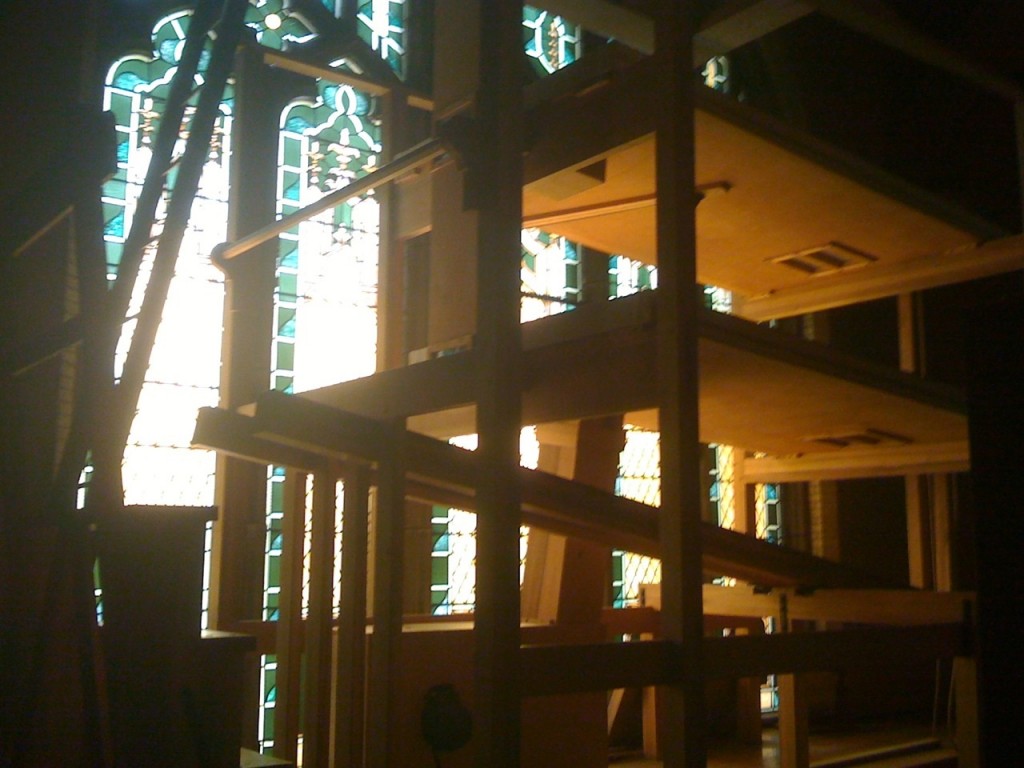This past Saturday I attended the final concert of Wellesley’s 2010-11 concert series. Organist James David Christie presented a fantastic hour-long program on the Fisk meantone organ to a large and enthusiastic crowd. The concert honored the 30th anniversary of the installation of the organ at the college and the 50th anniversary of C.B. Fisk organ builders, the company that built the instrument (and an organization peppered with Wellesley alumnae).
At the post-concert reception (there was a birthday cake to the organ and glasses of prosecco!) I had a chance to catch up with Margaret Angelini, an alumna who was at Wellesley the year the organ was installed. She told me the most touching story about how Owen Jander, beloved professor emeritus from the Music Department and the man who brought the organ to the college 30 years ago, christened the instrument shortly after it was built.
The Fisk meantone organ was designed especially for the performance of 17th century north German organ music. It has so many quirky details; the reeds and stops were inspired by various organs across Europe, there’s a sun carving that sits atop the organ and spins, making a tambourine-like sound, and the instrument has enormous manual bellows. These belows are pumped by stepping on what looks like an ancient stair master. Someone literally pumps the organ with her feet, supplying wind to the pipes (Wellesley’s bellows system was built especially for the average height and weight of a woman).
It goes without saying that pumping these bellows is a laborious endeavor, but rewarding, in that it provides the air, the lifeblood of the organ’s sound. There is an electric bellows for the organ, but choosing to use the manual bellows is a way of paying homage to the authentic way that these instruments used to be performed. When the instrument was inaugurated, Owen Jander wrote Wellesley’s motto, Non Ministrari sed Ministrare (which means “not to be ministered unto, but to minister”), on the hand bar of the manual bellows as inspiration to the scores of women who will literally breathe life into the instrument with their footsteps.
Owen’s inscription is faint, but still legible today:
 Here’s a picture of the manual bellow for the organ. Anyone can walk up to the balcony to look at this instrument, which is considered one of the three most important historic organs in the country.
Here’s a picture of the manual bellow for the organ. Anyone can walk up to the balcony to look at this instrument, which is considered one of the three most important historic organs in the country.


 '
'
2 Responses to The hidden inscription on Wellesley’s meantone organ